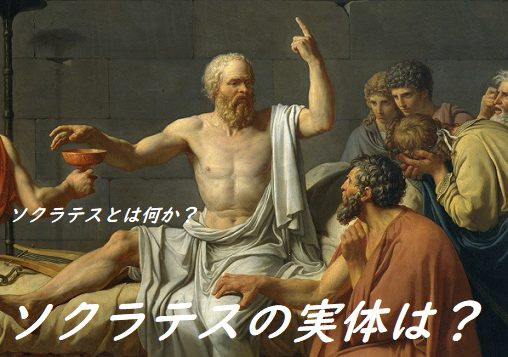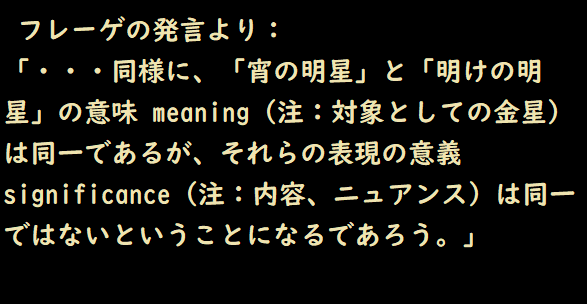
信念(というもの)は明確な概念ではない。なぜなら、最下等の動物と人間(注:高等動物)との間に連続性が存在するからである。(即ち、人間以外の)動物は(も)、何らかの信念を伴うと解釈可能な(様々な)行動様式を示す。このことは心に留めておかないといけない一方(while)、我々が関心をもっているのは(with which we are concerned)、特に、我々自身の経験において自ら知るところの人間の信念である。(ところで)語の使用なしに可能な信念は、比較的単純な種類の信念のみである。我々は皆、円周の円の直径に対する比率(円周率)は、近似的に3.14159であると信じているが、この信念が言語なくして存在できるかは私にはわからない(つまり、語=言葉を使用するからこそ理解可能となる)。けれども、多くの信念が明らかに言語使用以前のものである(Many beliefs, however, clearly ante-date language. 言語が使用される前から信念は存在している)。我々が犬を見ると、我々は「犬」と言い、そうして我々の信念に言語的表現を与える。 (しかし)猫は犬を見ると、その信念を我々人間とは異なった仕方で表現する。猫は毛を逆立たせ、背を弓なりに曲げ、シューシューと音を立てる。 これは(猫がシューという音を出すのも)我々人間が「犬(だ!)」という語を用いるのとちょうど同じような信念の表現である。同様のことが、記憶について(も)当てはまる。もしあなたが大きな雷鳴を聞いた直後に – もし我々が語を使用するなら- 「今しがた大きな雷鳴があった」という文で表現されるような状態にいるのである。 しかし、この時、たとえまったく語が心(頭)に浮かばないとしても、この文が表現することをあなたは信じているのである(信念をもっているのである)。「私がその用語(の意味)として理解している信念とは(A belief, as I understand the term)、身体または精神あるいはその両者の、ある一定の状態である。 冗長さを避けるために、私それをひとつ有機体(organism)の一定の状態と呼ぶことにして、身体的因子と心的因子との区別を無視することになる」(ラッセル『人間の知識』p.161) 私は(『人間の知識』のなかで)次のように続けて述べている。「何かを信じていることで成り立っている有機体のいかなる状態も、理論的には、そのあることに言及することなく完全に記述することが可能である。(たとえば)『一台の車がやって来る』と我々が信ずる時、我々の信念は、(我々の)筋肉や感覚器官や情緒がある一定の状態にあり、多分視覚を伴っている状態で、成り立っているであろう。これら全て及び我々の信念を形成する可能性のあるものが何であれ、 心理学者と生理学者が協力することにより、我々の精神と身体の外部にあるものについて語ることなしに、理論上は、十分記述することが可能だろう。」 適切な文の発話は、その信念を構成する心身の状態の一つにすぎない。言葉による表現(言語的表現)の重要性は、同じ信念を表現するいかなる非言語的状態よりも、伝達可能であること及びより正確でありうることに、由来している。
Chapter 13: language, n.10
Belief is not a precise concept, because of the continuity between the lowest animals and man. Animals show ways of behaviour which might be interpreted as involving this or that belief. But, while this should be borne in mind, it is especially human beliefs as we know them in our own experience with which we are concerned. It is only the simpler kinds of belief that are possible without the use of words. We all believe that the ratio of the circumference of the circle to the diameter is approximately 3.14159, but I do not see how this belief could exist in the absence of language. Many beliefs, however, clearly ante-date language. When you see a dog, you may say ‘dog’ and thus give verbal expression to your belief. A cat, seeing a dog, expresses its belief differently: its hairs stand on end, it arches its back, and hisses. This is an expression of belief, just as much as your use of the word ‘dog’. The same sort of thing applies to memory. If you have just heard a loud clap of thunder, you are in a state which, if you used words, would be expressed in the sentence, ‘there has just been a loud clap of thunder’. But you are believing what this sentence expresses even if no words come into your mind. ‘A belief, as I understand the term, is a certain state of body or mind or both. To avoid verbiage, I shall call it a state of an organism, and ignore the distinction of bodily and mental factors’ ( Human Knowledge, page 161 ). I go on to say, ‘Any state of an organism which consists in believing something can, theoretically, be fully described without mentioning the something. When you believe “a car is coming” your belief consists in a certain state of the muscles, sense-organs, and emotions, together perhaps with certain visual images. All this, and whatever else may go to make up your belief, could, in theory, be fully described by a psychologist and physiologist working together, without their ever having to mention anything outside your mind and body’. The utterance of an appropriate sentence is only one of the states of mind and body which constitute the belief. The verbal expression derives its importance through being communicable and through being capable of more precision than any non-verbal state embodying the same belief.
Source: My Philosophical Development, 1959, by Bertrand Russell
More info. https://russell-j.com/beginner/BR_MPD_13-100.HTM






